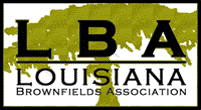Turning Brownfields into Community-Supported and Urban Agriculture
- louisianabrownfields
- Aug 10, 2023
- 1 min read

Before a Brownfields property can be redeveloped, community members need to investigate the site, examine past land use and test soils where contamination is likely. Contaminants found at levels that may pose health risks to community members are generally removed, treated, capped or contained in ways that limit exposure risks appropriate to the planned reuse. Community-supported and urban agriculture projects may be appropriate for properties or structures that are not contaminated, contamination was limited and below levels requiring a response or properties where contaminants are capped or contained to limit exposure and certain forms of gardening or growing would be permitted.
The addition of soil amendments can help improve soil structure, balance pH and in some instances can help bind contaminants and reduce exposure, providing further benefits to the property and surrounding community. A farm or community garden with good soil management practices can improve the environment and stormwater management, expand green infrastructure, reduce greenhouse emissions, and improve access to healt
hy, locally grown food. Other possible benefits include promoting health and physical activity, increasing community connections, and attracting economic activity.
Please see the Know Before You Grow info guide to see the steps to consider when creating urban agriculture and community garden reuses in former vacant areas. For more information, visit the EPA Website.















Comments